Are you considering downsizing by moving into a tiny house? If so, you will want to check out these simple and elegant interior ideas! This article has gathered some of the best design tips to help make your tiny house feel like home. From storage solutions to decorating ideas, it has you covered! So, whether you are just starting to plan your tiny house or are already in the process of building it, be sure to read through this list for inspiration.
What can Tiny House Interior consist of?
- Tiny house interiors can include a wide range of features and amenities, depending on the space available. Commonly included items are:
- Beds or sleeping areas such as lofts or built-in beds.
- Kitchens with full-size appliances, countertops, and cabinetry for storage.
- Living areas that may include seating, a television, bookshelves, and other entertainment items.
- Bathrooms with toilets, showers, and sinks.
- Storage including overhead storage compartments and cabinets below the bed or loft area.
- Heating and cooling systems such as mini split air conditioners or wall heaters.
- Lighting fixtures that can be hardwired into the electrical system.
- Outdoor decks or porches for relaxing in the fresh air and enjoying a cup of coffee.
- In addition to these basics, some tiny house owners opt for additional features like solar panels, composting toilets, hot tubs, outdoor shower stalls, and more. The possibilities are nearly limitless when it comes to creating your own unique tiny home interior that meets all your needs. No matter what style you choose, with careful planning and thoughtful design, you can create a cozy living space for yourself that is both functional and beautiful.
Interior Styles Tiny House
Farmhouse Style
The farmhouse style is a popular choice for tiny homes, as it offers the perfect balance between rustic and modern. It emphasizes natural materials like wood and stone, but also incorporates cozy touches like throw rugs and quilts. This style often uses pastel colors to create a warm atmosphere that feels inviting yet still comfortable. You can find farmhouse-style furniture, accessories, and decor in all shapes and sizes to fit perfectly into your tiny house design.
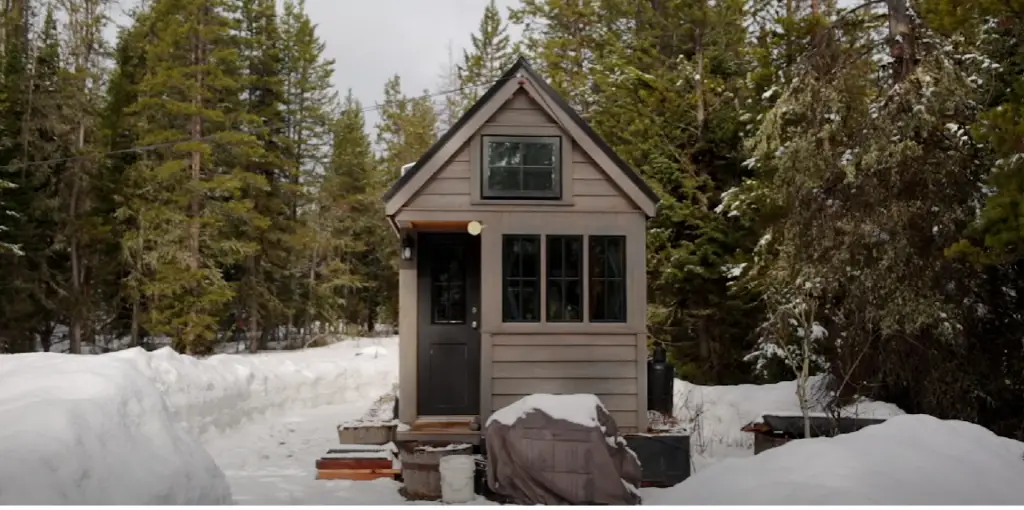
Bohemian Style
Bohemian style brings an eclectic mix of textures and colors to any space. This look features bold prints, bright colors, plants, beads, and tapestries, giving your tiny home a unique character all its own. Bohemian style is great for people who like to express their personality and have fun with their decor. You can try out different furniture pieces, textures, and colors until you find the perfect combination for your tiny house.
Modern Style
Modern style is all about sleek lines, clean silhouettes, and minimalism. This look is perfect for people who want a simple yet sophisticated atmosphere in their tiny homes. It’s best used with geometric shapes and neutral colors to keep the space feeling open and airy without overcrowding it. Modern-style furniture can be found in many sizes, making it easy to fit into any size of a tiny house. With the right furnishings, modern style can make even the smallest of spaces feel larger than life.
Coastal Style
Coastal style is perfect for tiny houses that are near the beach or just want to bring a bit of the ocean inside. This look often centers around blue and white colors, with accents of seaweed green or sandy tan. You can find furniture pieces made from driftwood, wicker, and rattan to bring natural elements into your tiny home. Accessories like lanterns, shells, starfish and other beach-inspired decorations will make your space feel like a coastal paradise.
Boho Style
Boho style is a mix of bohemian and modern styles, bringing together the best of both worlds. This look combines earthy tones with pops of bright colors to create an inviting atmosphere. Natural materials like rattan, jute, and macrame are used in furniture pieces to add texture and depth to your space. Accessories such as plants, patterned rugs, dreamcatchers, and wall hangings will instantly give your tiny house a boho vibe that you’ll love coming home to.
Industrial Style
Industrial style is all about mixing raw materials like wood and metal for an edgy yet cozy look. This style often incorporates exposed beams, pipes, or brick walls for a unique design aesthetic. Furniture pieces like metal-framed beds, leather chairs, and industrial storage pieces will give your tiny home a contemporary feel. You can add accents of wood for warmth or keep it minimal by using only metals to create a chic and modern atmosphere.
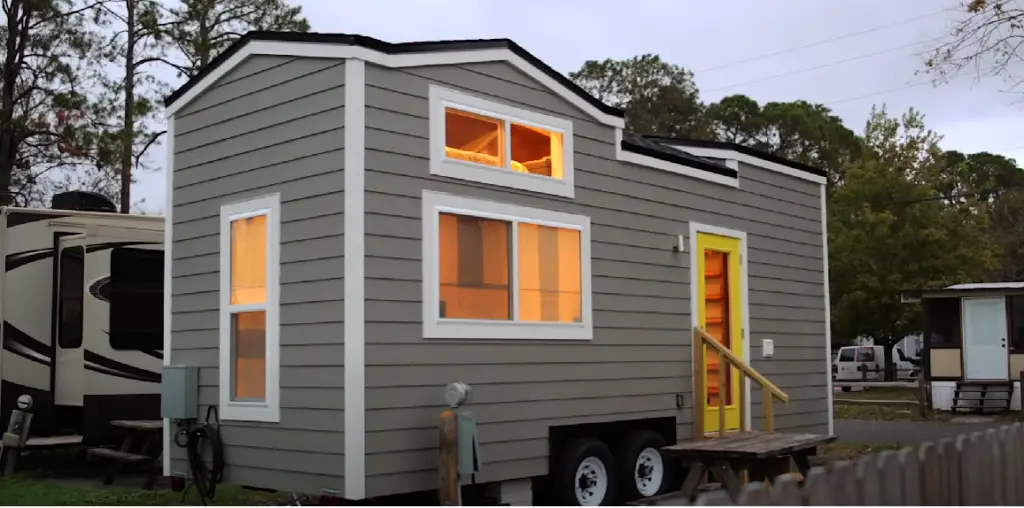
Vintage Style
Vintage style brings a unique charm to any tiny house design. If you have an old-fashioned aesthetic in mind, the vintage style could be the perfect choice for you. This look typically uses pastel colors and floral prints to create a cozy and inviting atmosphere. You can find vintage-style furniture, accessories, and decor in all shapes and sizes to fit perfectly into your tiny house design. With the right touches, you can create an oasis of comfort that truly feels like home.
Scandinavian Style
The Scandinavian style is perfect for those who love the simplicity of modern design but want to add some warmth to their tiny houses. This look typically uses neutral colors with pops of bright hues for a cheerful yet relaxed atmosphere. Furniture pieces are usually made from natural materials like wood or wicker, giving your space an organic feel. The use of geometric patterns and textures will also help create an inviting environment that feels comfortable and cozy.
Eclectic Style
The eclectic style is the perfect choice for those who want to mix and match different elements. This look can range from modern to vintage, and everything in between. You can choose furniture pieces in different shapes and sizes to create a unique atmosphere that reflects your personality. Accessories like colorful rugs, wall hangings, plants, and artwork will also help tie the room together for a one-of-a-kind tiny house design.
Rustic Style
The rustic style is the ideal choice for tiny houses that want to bring a bit of the outdoors in. This look typically centers around earthy colors like brown, green, and red. You can find furniture pieces made from wood or metal for an authentic feel. Accessories such as plants, woven baskets, and vintage decor will help create a warm and inviting atmosphere that feels like home.
7 Creative Tiny House Interior Design Ideas
Tiny House Interior with a Big Kitchen
When it comes to tiny house living, one of the most important features you can have is a spacious kitchen. A large kitchen can help maximize the potential of your tiny house interior and make it easier to cook meals on a smaller scale.
Investing in customized cabinetry or open shelving systems is a great way to organize items and keep them accessible without taking up too much space. Using bright colors for walls, countertops, and backsplashes will also make the space appear larger than it is.
Tiny House Bathroom with Natural Light
A natural light bathroom can be difficult to come by in many tiny homes due to their size limitations. To make the most of a small space, consider installing large windows that will flood the area with natural sunlight and help create an open atmosphere. Natural stone flooring or wall tiles can also help to brighten up the room. If you don’t have windows in your tiny house bathroom, you can use mirrors to reflect the light from other areas of your home and create an airy environment.
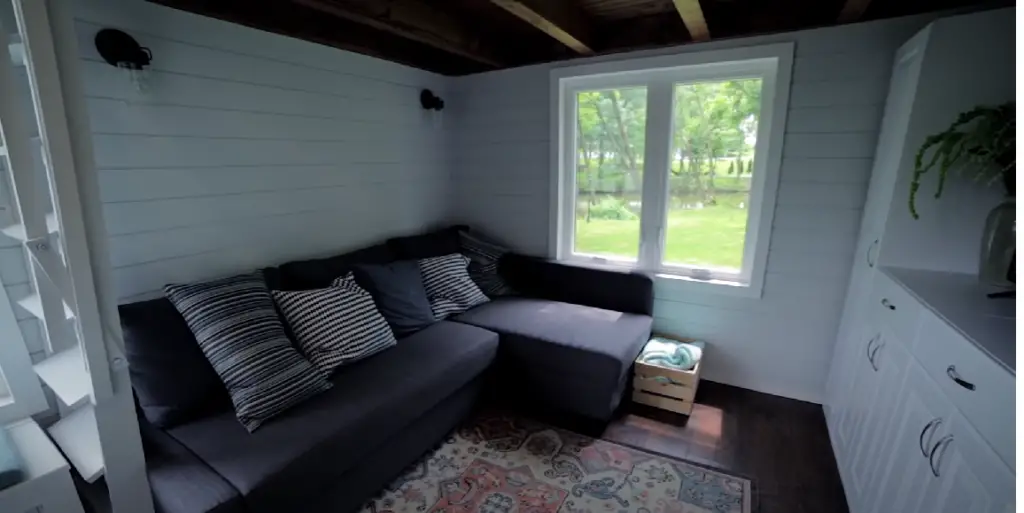
Tiny House Loft Bedroom
A loft bedroom is a great way to maximize floor space in a tiny home while still creating enough room for restful sleep. To make the most of this design, use storage solutions like built-in drawers under the bed frame or shelves around it that provide extra storage without taking up too much space. To add a touch of luxury, choose a comfortable mattress and some cozy bedding. For extra privacy, consider adding curtains or blinds to the loft area.
Tiny House Mudroom
When living in a tiny house, having a dedicated mudroom or entryway is an excellent way to keep clutter at bay and make your home feel more organized. Installing built-in storage solutions like coat hooks and wall cubbies is essential for creating an efficient mudroom that keeps everything neat. You can also add seating to the mudroom so you can take off your shoes with ease before entering the main living area of your home.
Loft Office Space
If you plan on working from home in your tiny house, creating a dedicated office space is a must.
Incorporating plenty of storage solutions like baskets, drawers, and wall-mounted organizers will go a long way in keeping your work area organized and efficient.
Tiny House Interior Design for Minimalists
For minimalists who want to keep their tiny house interior as uncluttered as possible, the key is to invest in multipurpose furniture and storage solutions. Ottomans with built-in storage, wall-mounted desks, and folding chairs are all great choices for maximizing space without sacrificing style. Installing hooks on the walls or using floating shelves can also help organize items without taking up too much floor space.
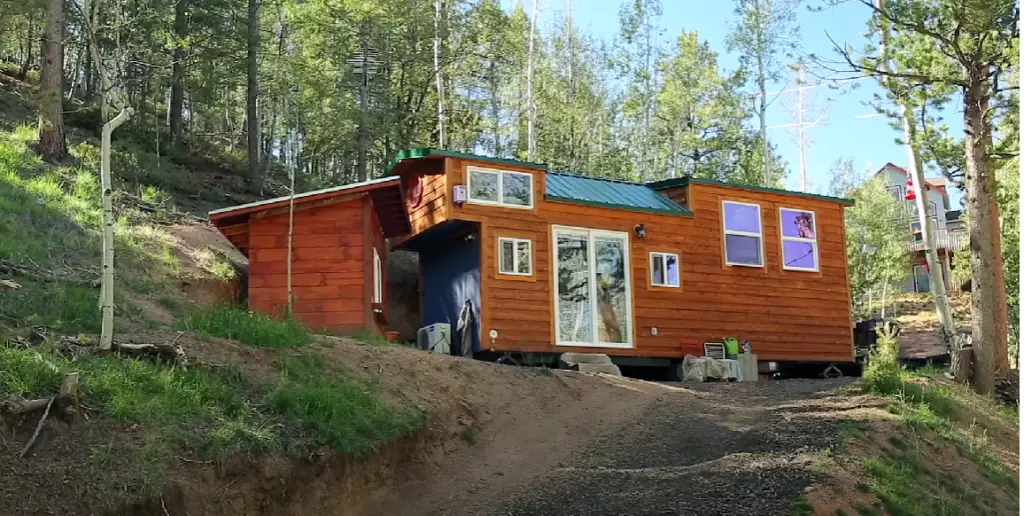
Tiny House Living Room with a Pop of Color
Adding bright colors to your tiny house’s living room is an easy way to make the area feel more lively and inviting. Painting one wall a cheerful color or adding vibrant accents like pillows, curtains, or rugs is an excellent way to bring life into the room without overcrowding it. If you’re hesitant to commit to a color, try introducing color in smaller ways such as with artwork or accessories. This will allow you to experiment with different colors and find the right combination for your space.
Tiny House for the Creative Types
Creative types can use their tiny house as a canvas to express themselves and let their creative ideas run wild. Look for unique furniture pieces that double as both storage solutions and decorative elements such as wall-mounted bookcases or floating shelves. Adding green plants to the space will also bring a breath of fresh air into the room. Finally, make sure you have enough natural light coming in through windows so you can focus on your projects without feeling cramped or claustrophobic.
Tiny Home Living for Modern Millennials
Modern millennials are drawn to tiny homes for their unique combination of mobility and affordability. To create a modern space in your tiny home, look for sleek furniture pieces with clean lines that don’t take up too much floor space. Incorporate minimalist decors like wall art or geometric accents to add personality without overwhelming the room. Finally, use natural light and bright colors to give the space an airy feel and make it more inviting.
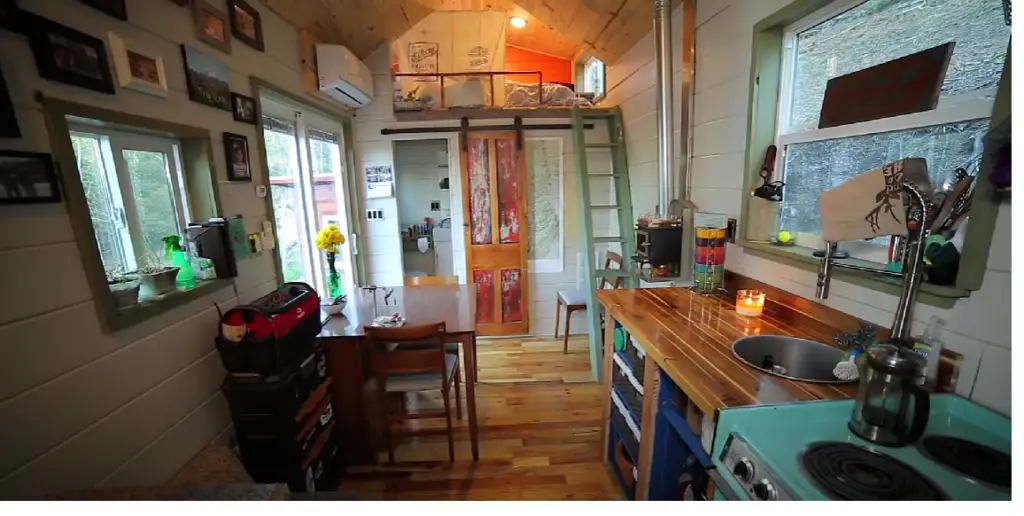
Tiny Homes for Nature Lovers
Nature lovers can make the most of their tiny homes by incorporating natural elements into their designs. Installing a skylight will bring natural light into the space and make it feel more open. Incorporating wood accents such as furniture pieces, decorations, or even a wooden wall paneling will also add warmth to the room. Finally, adding indoor plants will bring life and energy to your tiny home while adding pops of color to break up an otherwise neutral palette.
Tiny Homes for Work-Life Balance
Look for furniture pieces that can easily be moved around to create different living areas like a workspace or lounge area depending on your needs. Incorporate plenty of natural light and add plants to help make the space more inviting. Finally, try to use colors that evoke feelings of calmness and relaxation. This will help promote productivity while also allowing you to unwind after a long day [1].
What do you need to design a Tiny House Interior?
When designing a tiny house interior, it is important to consider the needs and desires of those who will live in it. You should also think about how to make the most of limited space and create an inviting environment for family, friends, and visitors. To get started, here are some items you may need:
- Furniture: Depending on the size of your tiny house, you will need furniture that fits and functions within the limited space available. Think of multi-functional pieces like a couch with built-in storage or a kitchen table that doubles as a desk. If possible, choose pieces that can transition easily between different uses over time.
- Storage Solutions: Creative solutions like wall-mounted shelving units help maximize storage while taking up minimal floor space. Consider how each item will be used and stored, then look for ways to maximize storage without sacrificing design or comfort.
- Lighting: Proper lighting can drastically change the mood of a room and allow you to create a unique ambiance depending on your needs. Look for creative solutions like wall sconces and lamps that provide task-specific light, as well as adjustable overhead lights for general illumination.
- Wall Decor: Small details such as wall art, mirrors, photographs, and tapestries can help personalize your tiny house interior and add character to the space. Choose pieces that speak to your interests but still fit with the overall theme of the home.
- Accessories: Small touches like throw pillows, rugs, and curtains can help add texture and color to a room. Consider items that are functional as well as aesthetically pleasing — for example, a patterned rug or a blanket can provide extra warmth in the winter months.
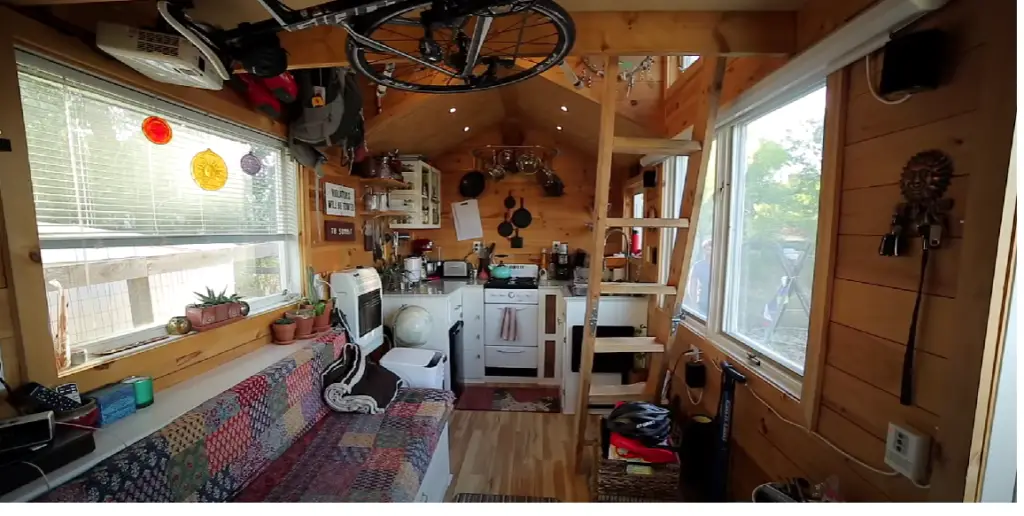
Ultimately, design your tiny house interior with intentionality and thoughtfulness to create a warm and inviting space that reflects your personality and meets all of your needs. With these items in mind, you should have no trouble creating the perfect tiny house interior [2]!
FAQ
How To Build A Tiny House?
Building a tiny house requires careful planning and consideration of several factors, such as size, materials, location, and budget. First, decide on the size of your tiny house. Tiny homes come in sizes ranging from 100 to nearly 500 square feet. Next, consider the materials you will use to construct your house. Options include pet-friendly siding, traditional wood framing, or prefabricated kits. Location is also important when selecting a site for your tiny home. You should research local zoning ordinances and building codes before settling into an area. Finally, select a budget that works with your financial plan and stick to it throughout the project.
What Is A Tiny House?
A tiny house is a small dwelling typically ranging from 100 to 500 square feet. It’s generally made with pet-friendly siding, wood framing, or prefabricated kits and can often be built on a trailer for easy transportation. Tiny homes are becoming increasingly popular due to their affordability and eco-friendliness. They are also ideal for those who want to live simply and peacefully, free from the hustle and bustle of city life.
How can I make my tiny house look good?
There are several ways to make your tiny house look good without spending a lot of money. Start by investing in quality materials, such as paint or wallpaper, that will last and make the space appear larger than it is. You can also use mirrors to create an illusion of more space, and add colorful accents like rugs and pillows to draw attention away from any imperfections. Finally, consider adding plants or flowers for extra life and brightness. With these tips, your tiny house will be looking great in no time!
What are the three positive features of a tiny house?
The three positive features of a tiny house are:
1. Affordability – The small size of a tiny house means that it is much more affordable than larger homes. This allows you to save money on housing costs and invest in other areas of your life, such as travel or hobbies.
2. Eco-friendly – Tiny houses are usually constructed with energy-efficient materials, appliances, and lighting to reduce their environmental impact.
3. Mobility – Since they’re built on trailers, tiny houses can be moved from place to place with relative ease. This makes them perfect for those who desire freedom and flexibility in their living situation without sacrificing comfort or luxury.
Are there any drawbacks to living in a tiny house?
Yes, there are some drawbacks to living in a tiny house. It can be difficult to store all of your belongings, and the cramped space may make it challenging to entertain guests or have more than one person living in the home. Additionally, depending on local zoning regulations, you may have difficulty finding a place to park your tiny house legally. Finally, due to their small size, they are not always suitable for families with children or pets.
How do you make a tiny house cozy?
Making a tiny house cozy requires careful planning and creative decorating. Start by considering how you plan to use the space, such as for sleeping, cooking, or entertaining. Then add comfortable furniture, like sofas or armchairs with plenty of plush pillows and throws. You can also add rugs to create a warm atmosphere and hang decorations on the walls, like artwork or banners. Finally, don’t forget about lighting! String lights or lamps will make your tiny home feel much cozier than it would without them.
What is the most important consideration when building a tiny house?
The most important consideration when building a tiny house is safety. Make sure that all materials used in construction comply with local building codes and that electrical systems are accessed and inspected by a certified professional. Additionally, it’s wise to research and understand the local zoning ordinances for tiny houses in your area as well as any permits or licenses you may need before starting construction. Finally, be sure to keep track of your budget throughout the build process so that you don’t end up spending more than you can afford.
What should I do before I start building my tiny house?
Before you start building your tiny house, it is important to determine where you plan on placing it. Make sure to check with local municipalities and make sure there aren’t any zoning regulations that could prevent you from having your tiny house in a particular location. Additionally, consider researching different designs and materials to help ensure your finished home is safe, durable, and energy-efficient. Finally, create a budget and timeline for the build process so that you stay on track and don’t go over budget.
Useful Video: Tiny House Kitchen Ideas: Smart Small Space Solutions
Conclusion
Tiny house interior ideas can be as varied as the wide range of tiny house designs, and this article has explored some creative approaches to making the most out of a small living space. From repurposing salvaged materials and incorporating nature-inspired elements to utilizing multifunctional furniture and maximizing storage solutions, there are plenty of options for creating a stylish and comfortable home within a tiny house. With careful planning, creativity, and an eye for design, it is possible to create a cozy home that is both efficient and practical in its use of space. Tiny houses may be small but they offer big living potential!
References:
- https://thetinylife.com/tiny-house-interiors/
- https://bluethumb.com.au/blog/interior-design/tiny-house-interiors-what-you-need-to-know/


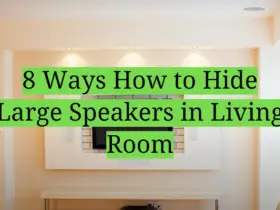


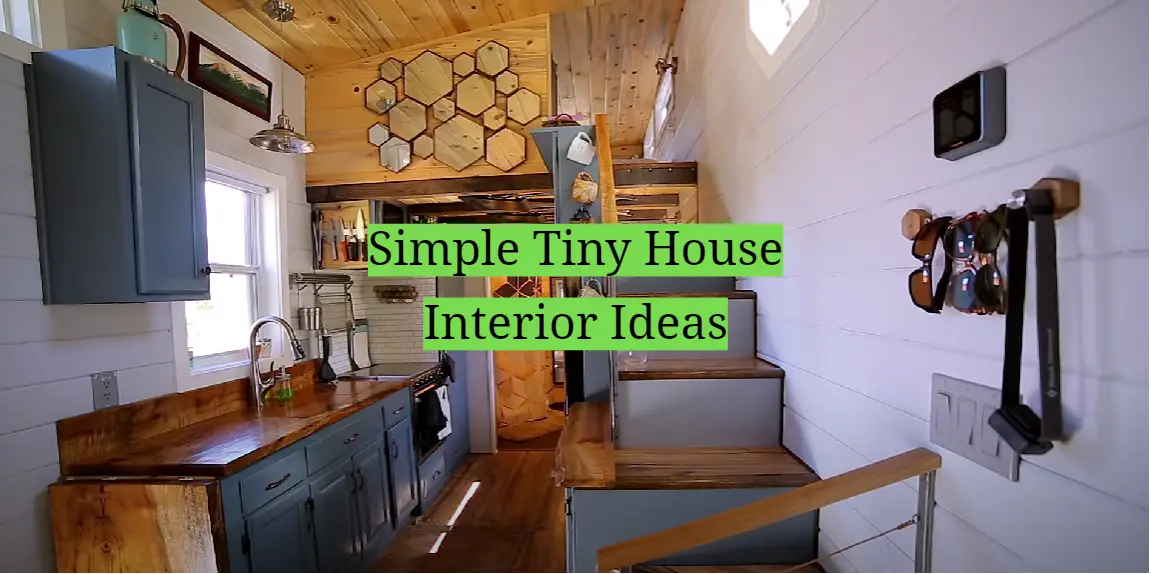
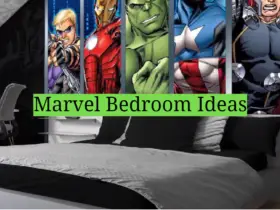
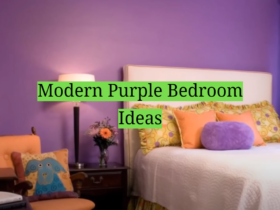
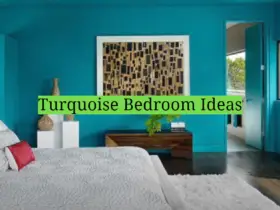

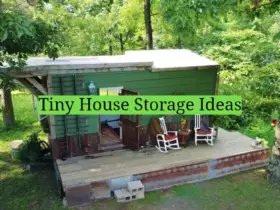
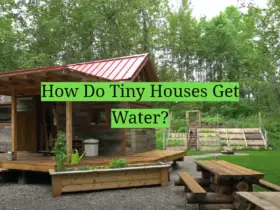
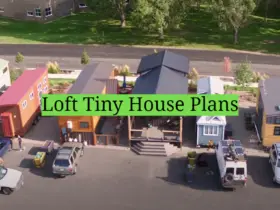
Leave a Reply